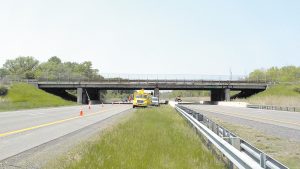The second biggest budget item in the state budget is education, which is right behind health care. Last year, the state spent $22.3 billion on education. In 2012, combined with the local and federal share of education, New Yorkers spent $58.4 billion on public education. That’s up 56 percent over combined spending in 2002. This […]
Get Instant Access to This Article
Become a Central New York Business Journal subscriber and get immediate access to all of our subscriber-only content and much more.
- Critical Central New York business news and analysis updated daily.
- Immediate access to all subscriber-only content on our website.
- Get a year's worth of the Print Edition of The Central New York Business Journal.
- Special Feature Publications such as the Book of Lists and Revitalize Greater Binghamton, Mohawk Valley, and Syracuse Magazines
[bypass-paywall-buynow-link link_text="Click here to purchase a paywall bypass link for this article"].
The second biggest budget item in the state budget is education, which is right behind health care. Last year, the state spent $22.3 billion on education. In 2012, combined with the local and federal share of education, New Yorkers spent $58.4 billion on public education. That’s up 56 percent over combined spending in 2002.
This year, Governor Cuomo proposes to spend $23.14 billion on education, up $1.1 billion over last year. However, his proposal contains one big stipulation — this increase in school aid will be enacted only if the state legislature adopts all of his education proposals included in his budget bill. Cuomo’s education proposals are controversial and include changes to teacher evaluations, tenure, and certification. If his proposals are not adopted, the governor will support a
$377 million increase in school aid.
People should be troubled by the governor’s efforts to tie implementation of his proposals to increases in state aid for schools, regardless of how one feels about the proposals. If the governor is the advocate for students he claims to be, and his proposals are as necessary as he claims, they should rise or fall on their own merits. He should not attempt to ram these changes through with the promise of much-needed additional educational aid for school districts.
Also troubling is the fact that the governor, breaking with tradition, is refusing to release school-aid runs for individual districts based on his school-aid proposals. Many variables determine how much state aid a school district receives. Because state aid is a significant part of a school district’s revenue, they need that number to create a budget and ultimately determine their tax levies.
Generally, a school district can conservatively use the governor’s numbers because the governor’s school-aid proposals are historically lower than the amount the school districts ultimately receive when the state budget is passed. Not providing school-aid runs based on the governor’s numbers presents a difficulty to districts who, by law, must submit their proposed tax levies to the state comptroller by March 1. Lawmakers have until April 1 to pass the state budget.
Among the proposals he’s demanding, the governor wants 50 percent of teacher evaluations based on students’ state test scores. The other 50 percent will be based on classroom observations. Currently, 20 percent of the evaluation hinges on state test scores, and in some cases 40 percent, depending on the district.
Prior to the election last fall, the governor proposed legislation that disassociated Common Core student test scores from teacher evaluations for the 2013-14 and 2014-15 school years for teachers rated “developing” or “ineffective.” The bill passed almost unanimously in both houses. However, after the election, the governor vetoed the same bill he proposed. Since then, he has returned with a teacher-evaluation proposal that would allow student test scores to determine 50 percent of the teacher-evaluation score, despite the fact that last year, almost every legislator voted to place less emphasis on student testing.
Parents have told me they want less testing in general in the classrooms. We need to be careful that we’re not placing a greater emphasis on data and averages than we are on kids. I sponsored legislation last year that would place a moratorium on Common Core while we evaluate if the new curriculum is best for kids and education, but the Assembly Speaker blocked those measures from reaching the Assembly floor for a vote.
The teacher evaluations are also an unfunded mandate placed on school districts. The evaluations take time and staff hours to complete. Last year, my Republican colleagues and I offered an amendment to the budget bill that would require the state to reimburse school districts for expenses for the implementation of teacher-evaluation systems. This was defeated in the Assembly. The governor’s system could cost more for taxpayers, as he is proposing an independent evaluator, which could be someone who is hired by the district or a principal from another school, to evaluate teachers.
William (Will) A. Barclay is the Republican representative of the 120th New York Assembly District, which encompasses most of Oswego County, including the cities of Oswego and Fulton, as well as the town of Lysander in Onondaga County and town of Ellisburg in Jefferson County. Contact him at barclaw@assembly.state.ny.us, or (315) 598-5185.



